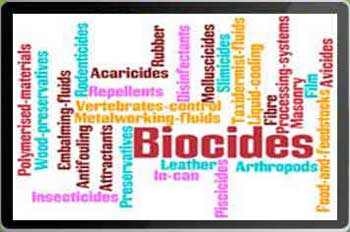As a Benzisothiazolinone supplier, we are often asked some questions about Benzisothiazolinone by our clients. Now, I have sorted out the 5 most frequently asked questions.
Content Table
- What is Benzisothiazolinone?
- What is Benzisothiazolinone made from?
- How dose Benzisothiazolinone work?
- What is the difference between Benzisothiazolinone and Methylisothiazolinone?
- Is the Benzisothiazolinone safe?
1. What Is Benzisothiazolinone?
Benzisothiazolinone, also called BIT, is an off-white to yellowish liquid antimicrobial chemical.
How does this chemical pronounce?
Benzisothiazolinone is an preservative chemical used in a wide variety of applications, such as cleaning and building products. It is a preservative, but Benzisothiazolinone is also a disinfectant used in the film, fiber, leather, masonry, metalworking, and embalming industries. However, it is also found in liquid hand soap and sunscreen. It dissolves in water and is used in water-based solutions, such as pastes, paints, and oils.
As a Benzisothiazolinone supplier, we use it in several of our products as a biodegradable preservative that is a better alternative to formaldehyde, methylisothiazolinone, and medium-chain triglycerides.
2. What Is Benzisothiazolinone Made of?
Yes. You must want to know what is benzisothiazolinone made of. I bet no benzisothiazolinone suppliers will tell you the following content. You will get the answer. Let’s take a look at how to make benzisothiazolinone.
There are three common methods for making benzisothiazolinone.
The first involves reacting 2-halogenothiobenzoyl halide with a primary amine to obtain an N-substituted benzisothiazolinone. The 2-halogenothiobenzoyl halide is typically made by cleaving the disulphide bond of 2,2′-dithio-bis-benzoic acid with halogen and simultaneously or sequentially converting the carboxylic acid groups to acid halides.
A second method involves cyclising 2-halogenothiobenzamide in the presence of acid or alkali. The 2-halogenothiobenzamide typically comes from converting 2,2′-dithio-bis- benzoic acid to bisamide and then cleaving the disulphide bond with halogen.
The third method is to heat 2,2′-dithio-bis-benzamides in the presence of a sodium hydroxide solution. Another method is to disproportion bisamide in alkali in the presence of oxygen or an oxygen-release agent.
You can read this post to find more details about Benzisothiazolinone synthesis.
3. How Does Benzisothiazolinone Kill Bacteria?
Benzisothiazolinone belongs to one of the biosynthesis inhibitors and it is a heterocyclic compound. It is Mainly non-oxidizing fungicides. The active part on the heterocyclic ring forms hydrogen bonds with the bases in the protein of the bacteria and is adsorbed on the cells of the bacteria. Thereby destroying the structure of DNA in the cell and making it lose the ability to replicate. Eventually, kill bacteria.
The bactericidal mechanism is that the Benzisothiazolinone enters the bacteria through the cell membrane and cell wall, and reacts with the sulfur-containing components in the cell. Then kill bacteria.
The most important biological activity of Benzisothiazolinone is the formation of chemical bonds between the S, N and O groups on the heterocyclic ring and the DNA bases of proteins in bacteria. This destroys the structure of the DNA inside the cell, making it unable to replicate and causing the cell to die. Because the DNA of bacterial cells is naked (prokaryotic), while the DNA of human cells is enveloped, its biological activity is selective.
All Benzisothiazolinones contain active N — S bonds, which will react with proteins, enzymes or amino acids containing — SH group in the cell membrane to open a loop, and then react with amino and sulfhydryl groups, amino acids and amino compounds contained in the cell membrane or cell, thus destroying the normal metabolism of cells, inhibiting or killing cells.
4. Is Benzisothiazolinone The Same As Methylisothiazolinone?
Methylisothiazolinone (MIT), is an organic compound, chemical formula is C4H5NOS, molecular weight is 115.15. It is a white to yellow powder with a certain odor. It is a highly effective fungicide. It has a good effect on inhibiting the growth of microorganisms. MIT inhibits the growth of bacteria, fungi, molds, and mildew.
Exactly speaking, benzisothiazolinone is not the same as methylisothiazolinone. They are both belong to Isothiazolinones. Benzisothiazolinonet is important to point out that it is often used in many cleaning products in conjunction with methylisothiazolinone. But they have different chemical structures. Benzisothiazolinone is a skin sensitiser in animal models with potency similar to methylisothiazolinone.
5. Is Benzisothiazolinone Safe?
Benzisothiazolinone may be in the form of a white to yellow powder or liquid. While many uses of the chemical are approved by the federal government, it can cause allergic reactions in some individuals and is considered an ingredient of concern by many healthy products sources.
BIT had no irritation, and the acute oral LD50 of rats was 1400 mg/Kg, indicating low toxicity. No carcinogenic, teratogenic, mutagenicity was found.
In 2005, Benzisothiazolinone underwent a review process by the EPA to determine its reregistration eligibility for use in a range of products and applications. After considering the overall information on its toxicity, uses, and environmental effects, the EPA concluded that it posed no harm to the population. However, that doesn’t mean no health effects were found at all.
The opinion further states: “There is no information on what may be safe levels of exposure to Benzisothiazolinone in cosmetic products from the point of view of sensitisation. Until safe levels of exposure have been established, the use of Benzisothiazolinone in cosmetic products as a preservative or for other functions cannot be considered safe in relation to sensitisation.”
Where normal use would yield a dose below the level at which skin sensitization might occur. The products under consideration were sunscreen, laundry detergent, dish soap, and spray cleaner.
Later, in 2013, researchers published a study that set out to derive the highest concentration of BIT in certain consumer products that would result in exposures below the No Expected Sensitization Induction Level (NESIL). That is, where normal use would yield a dose below the level at which skin sensitization might occur. The products under consideration were sunscreen, laundry detergent, dish soap, and spray cleaner. They then performed a pilot examination via bulk sample analysis of one representative product from each category labelled as containing BIT. Their findings showed all BIT concentrations well below the limit of detection of 0.0006%.
These are five most FAQ about Benzisothiazolinone. I hope this article is helpful to you.







